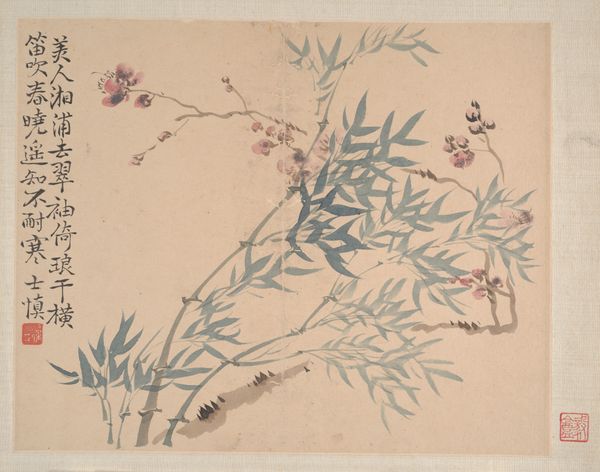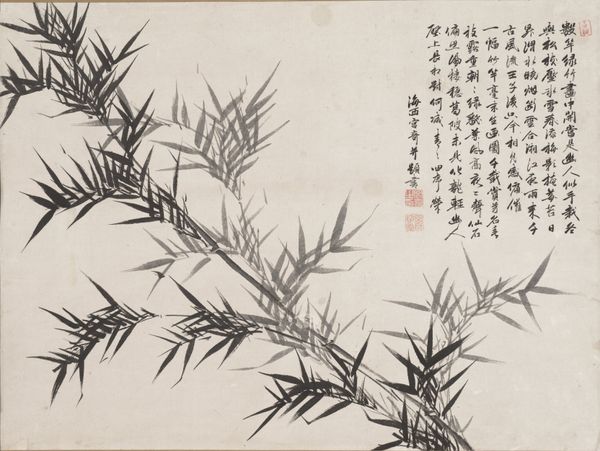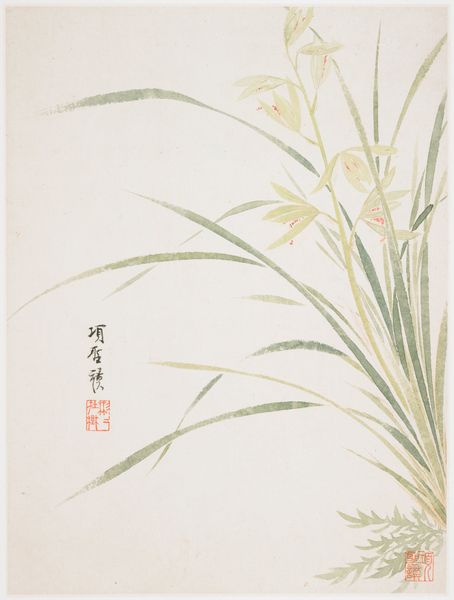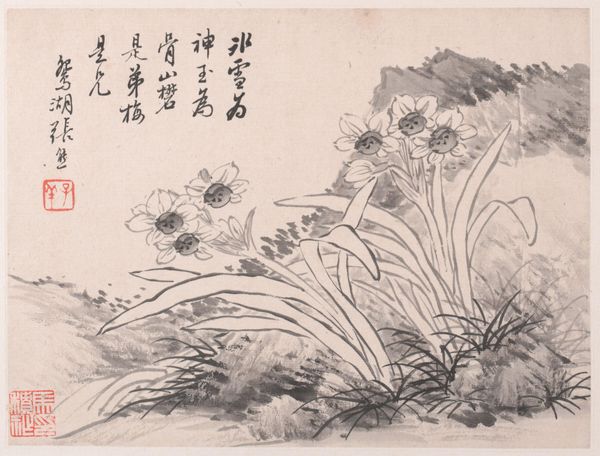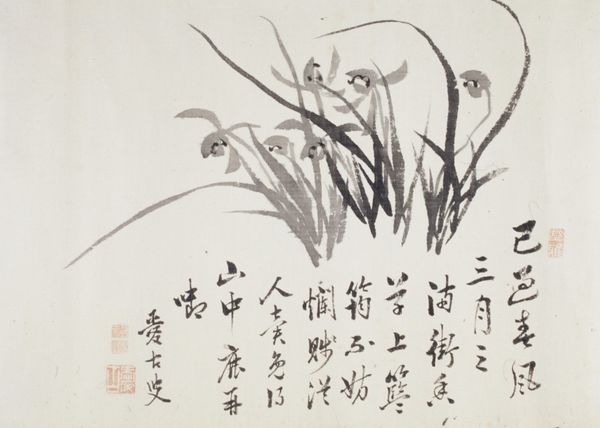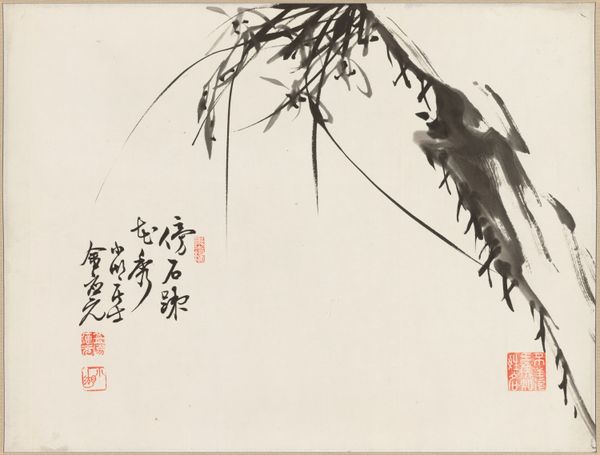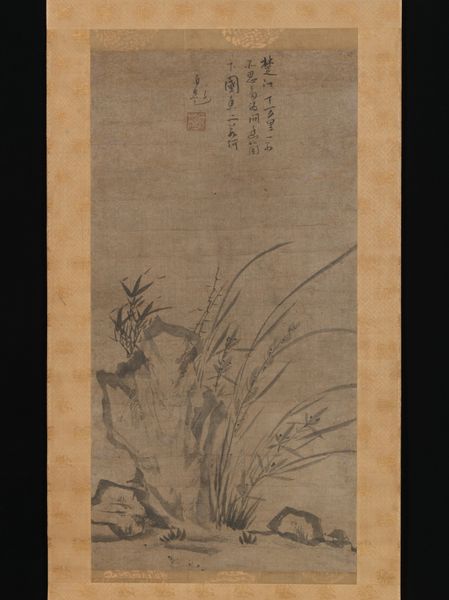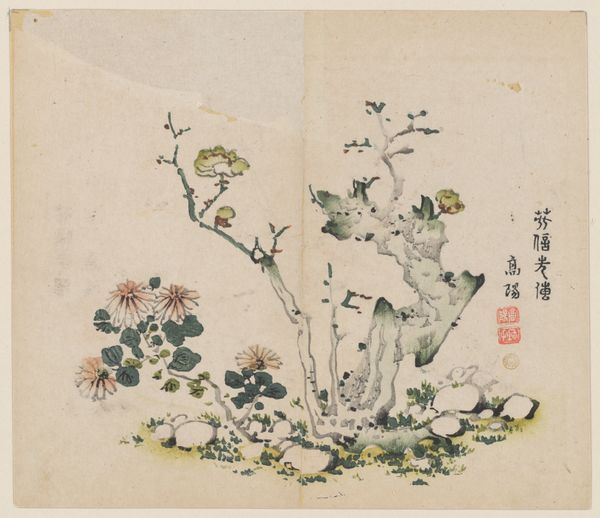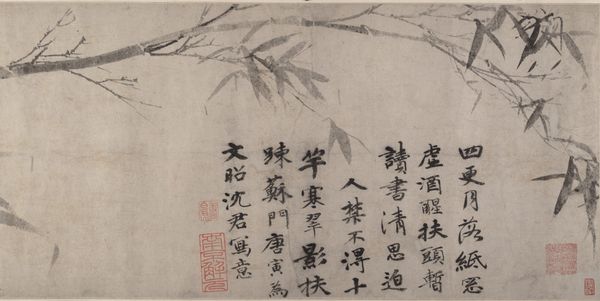
drawing, ink-on-paper, ink
#
drawing
#
asian-art
#
landscape
#
etching
#
ink-on-paper
#
ink
#
geometric
Dimensions: 10 7/8 × 105 5/8 in. (27.62 × 268.29 cm) (image)11 9/16 × 120 in. (29.37 × 304.8 cm) (without roller)
Copyright: Public Domain
Curator: This lovely ink-on-paper artwork, titled "Orchids," dates back to the mid-19th century and is currently held here at the Minneapolis Institute of Art. Editor: The immediate impression is one of profound quietude, wouldn't you say? The washes of ink create an almost meditative visual rhythm. Curator: Absolutely. Considering the materials, ink was, of course, fundamental to scholarly expression. But here it appears the making and handling were as equally important as the botanical representation. It feels…unhurried. Editor: How might this particular type of imagery fit into the social history of artistic representation during that era? Does the orchid hold specific cultural weight? Curator: Precisely! Orchids, along with bamboo, chrysanthemum, and plum blossoms, held a distinguished place as "Four Gentlemen" in traditional East Asian art. Their cultivation and artistic depiction reflected an idealized scholar's studio and contemplative practice. These plants carried moral attributes; in this case, orchids often represented refinement, solitude, and integrity. Editor: So, these depictions become embedded within systems of status and value through the selection and preparation of particular natural forms and specialized tools... Curator: Yes, and also through calligraphy, like the column of text at the far right edge. Its careful placement is just as critical as any depicted orchid plant to both balance the overall image and underscore intellectual engagement. Editor: It almost reads as an argument for self-cultivation, an echo of social and intellectual refinement. It reminds us that an artwork of this period carries complex codes and aspirations beyond its immediate aesthetic. Curator: That's insightful, especially considering the museum space in which we find it today—part of a historical narrative actively being preserved and interpreted. Editor: Exactly. Viewing the piece here is only one moment in the longer chain of social processes related to the life of this image. Thank you, that offers a richer context! Curator: My pleasure. Examining both materials and the larger historical context hopefully grants the viewer an expanded appreciation.
Comments
No comments
Be the first to comment and join the conversation on the ultimate creative platform.


